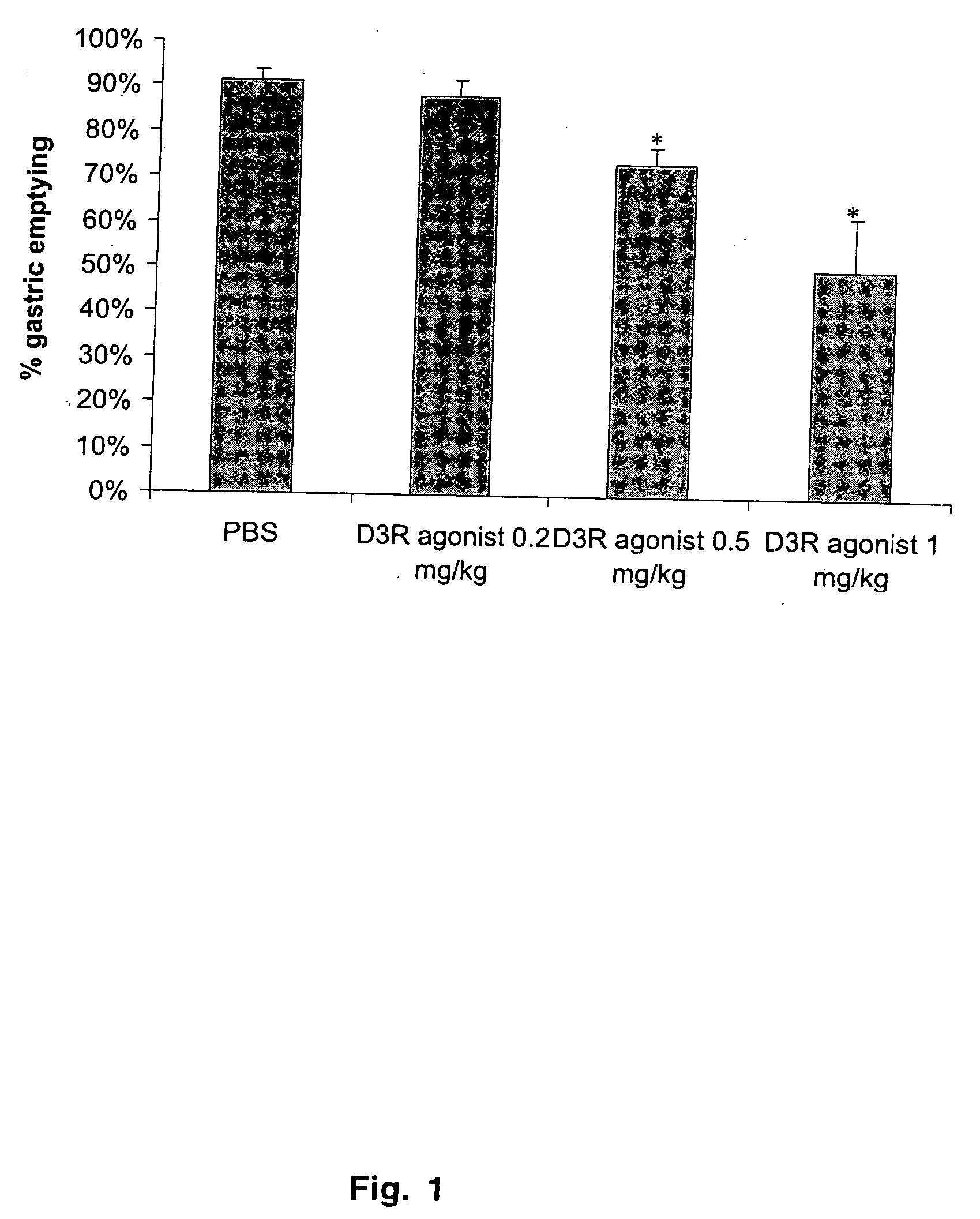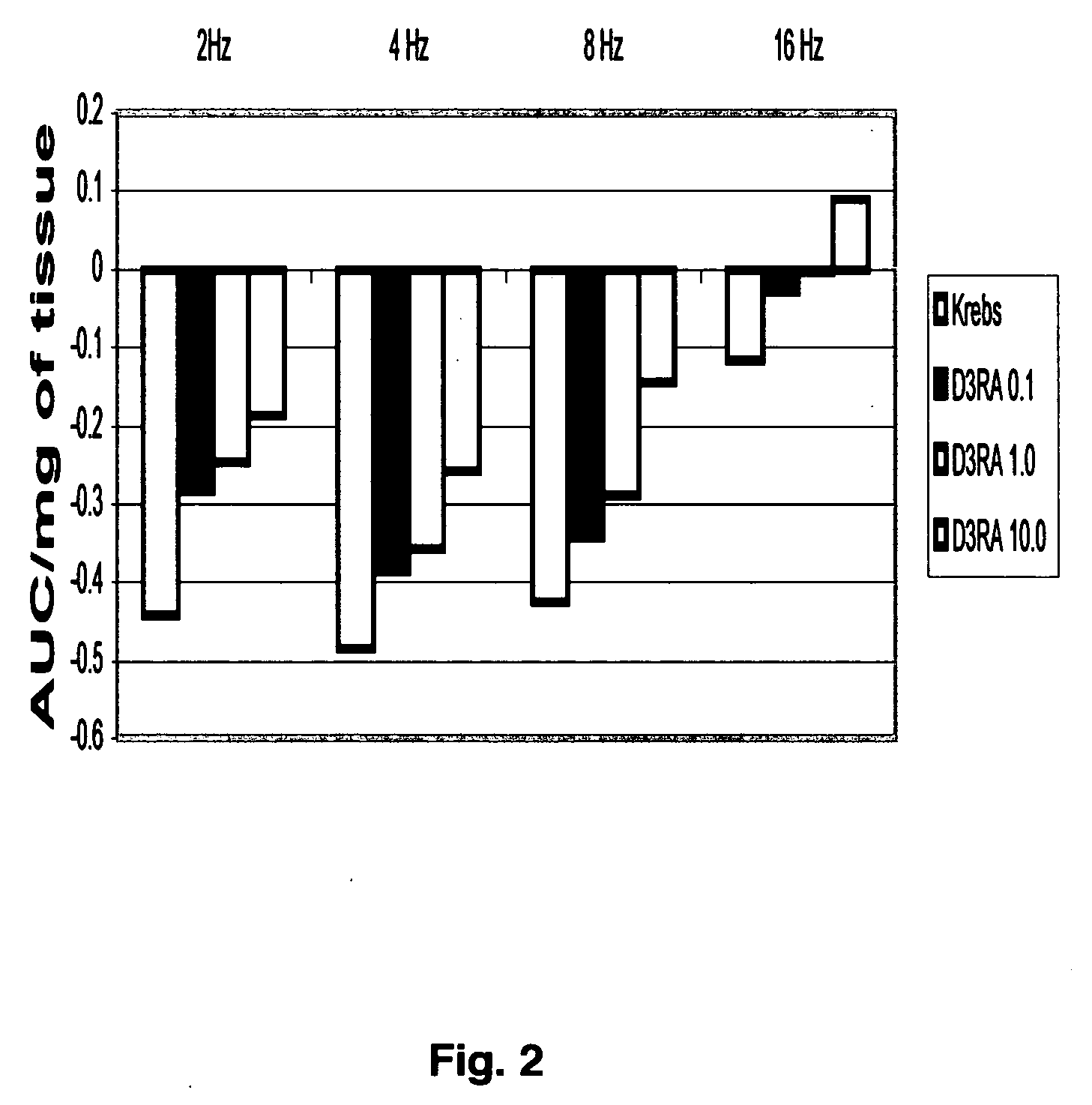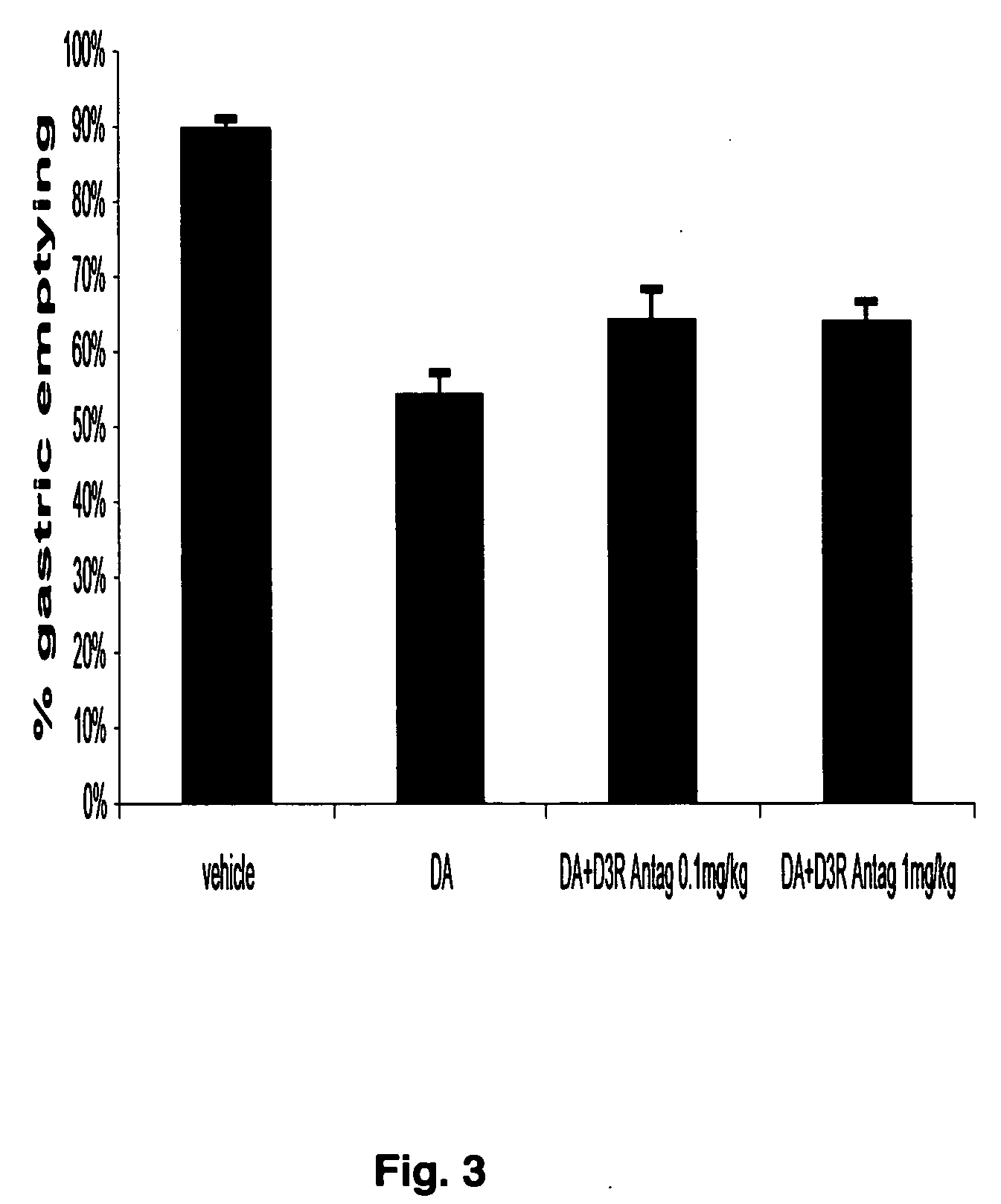Dopamine 3 receptor agonist and antagonist treatment of gastrointestinal motility disorders
- Summary
- Abstract
- Description
- Claims
- Application Information
AI Technical Summary
Benefits of technology
Problems solved by technology
Method used
Image
Examples
example 1
Gastric Emptying Test
[0051] A solution of 50 mg phenol red in 100 ml aqueous methylcellulose (1.5%) was used as a test meal. Methylcellulose (1.5 g, 400 centipoises) was dispersed in 100 ml of hot water (80° C.) under continuous shaking. The solution was allowed to cool to 35° C., and then phenol red was added. Intensity and duration (5 hr) of agitation were kept constant to obtain solutions of reproducible viscosity.
[0052] Conscious rats were fed the 0.05% phenol red methylcellulose solution and euthanized after 20 minutes. The stomach was clamped at the pylorus and cardiac ends before removal. The stomach and its contents were homogenized with 100 ml of 0.1N NaOH. A baseline control for each phenol red solution preparation was used by mixing 1.5 ml with 100 ml of 0.1N NaOH. The mixture was then kept for 1 hr at room temperature: 5 ml of the supernatant was added to 0.5 ml of trichloroacetic acid solution (20% w / v) to precipitate the proteins. After centrifugation (2500×g for 20...
example 2
Effect of Dopamine 3 Receptor Agonist on Gastric Emptying
[0054] Adult male Sprague-Dawley rats (weighing 200-250 g) were deprived of food 18 hr prior to experiments but allowed free access to water. The animals were intraperitoneally injected with a dopamine 3 receptor agonist, PD 128907 hydrochloride, at 1 mg / kg or with physiological saline (control) before administration by oral tube of 1.5 ml of pre-warmed (35° C.) 0.05% phenol red solution.
[0055] As shown in FIG. 1, systemic activation of dopamine 3 receptor (D3R) significantly delays gastric emptying in the rat, suggesting D3R plays an important role in the regulation of gastric motility.
example 3
Effect of Dopamine 3 Receptor Agonist on Pyloric Function
[0056] Pyloric function was assessed in an organ bath by measuring the relaxation of pyloric strips of adult male Sprague-Dawley rats in the presence of the dopamine 3 receptor agonist, PD 128907 hydrochloride. FIG. 2 illustrates the significant reduction in electric field stimulation induced relaxation of pyloric strips in the presence of the agonist. The figure clearly shows that this effect was dose dependent, showing a greater decrease in relaxation with increasing doses of the D3R agonist.
PUM
 Login to View More
Login to View More Abstract
Description
Claims
Application Information
 Login to View More
Login to View More - R&D
- Intellectual Property
- Life Sciences
- Materials
- Tech Scout
- Unparalleled Data Quality
- Higher Quality Content
- 60% Fewer Hallucinations
Browse by: Latest US Patents, China's latest patents, Technical Efficacy Thesaurus, Application Domain, Technology Topic, Popular Technical Reports.
© 2025 PatSnap. All rights reserved.Legal|Privacy policy|Modern Slavery Act Transparency Statement|Sitemap|About US| Contact US: help@patsnap.com



